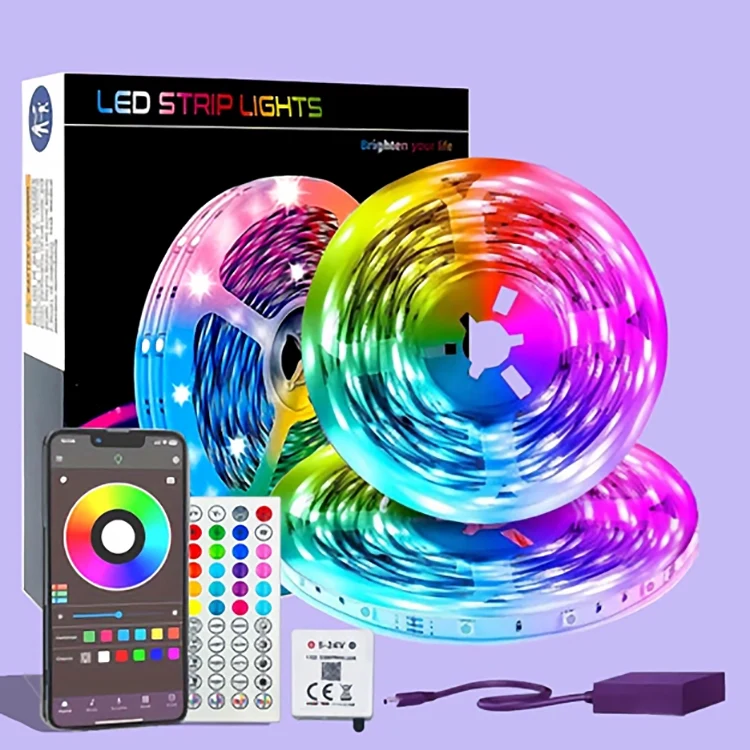What Features Should I Look for in LED Light Strips?
2024-10-12
When choosing LED light strips, several features can impact their performance, functionality, and aesthetic appeal. Here are key features to consider:
1. Brightness (Lumens)
- Lumen Output: Look for the lumen output, which measures how bright the LED strip is. Higher lumens indicate brighter light. For ambient lighting, 300-600 lumens per meter is typically sufficient, while task lighting may require more.

2. Color Temperature
- Warm White (2700K-3000K): Creates a cozy, inviting atmosphere, ideal for living spaces.
- Cool White (4000K-5000K): Provides a more modern, clean look, suitable for kitchens and bathrooms.
- RGB Options: Some LED strips can change colors (RGB), offering a wide range of colors for decorative lighting.
3. Flexibility and Adhesive Backing
- Flexibility: Ensure the strips can bend around corners or curves easily, making them suitable for various applications.
- Adhesive Backing: Check if the strips come with a strong adhesive backing for easy installation on different surfaces.
4. Power Supply
- Voltage: Most LED strips operate on 12V or 24V. Ensure you have a compatible power supply.
- Wattage: Verify the total wattage of the strip to ensure your power supply can handle it without overheating.
5. Length and Cutability
- Length Options: Choose strips available in different lengths to suit your specific project needs.
- Cut Points: Look for marked cut points that allow you to cut the strips to your desired length without damaging them.
6. Water Resistance
- IP Rating: Consider the IP (Ingress Protection) rating if you plan to use the strips in wet areas (like bathrooms or outdoors). An IP65 rating indicates they are water-resistant.
7. Control Options
- Remote Control: Some LED strips come with a remote for convenient control of brightness and color changes.
- Smart Features: Look for options compatible with smart home systems (e.g., Wi-Fi, Bluetooth) for voice control and automation through apps.
8. Dimming Capabilities
- Dimmable Options: Ensure the LED strips are dimmable if you want to adjust brightness levels for different settings.
9. Color Rendering Index (CRI)
- CRI Rating: A higher CRI (above 80) indicates that the light accurately renders colors, making it essential for applications where true color representation is important.
10. Heat Dissipation
- Quality of Materials: Check if the LED strips are made from materials that allow for effective heat dissipation. Overheating can shorten their lifespan.
11. Lifespan
- Rated Lifespan: Most LED strips last between 25,000 to 50,000 hours. Look for strips with a longer lifespan for better value.
12. Warranty
- Manufacturer Warranty: A good warranty can indicate the manufacturer's confidence in their product. Look for at least a one-year warranty.
Conclusion
When selecting LED light strips, consider your specific needs in terms of brightness, color temperature, installation requirements, and additional features like smart controls or waterproofing. By evaluating these features, you can choose the right LED strips for your lighting projects, ensuring both functionality and aesthetic appeal.


